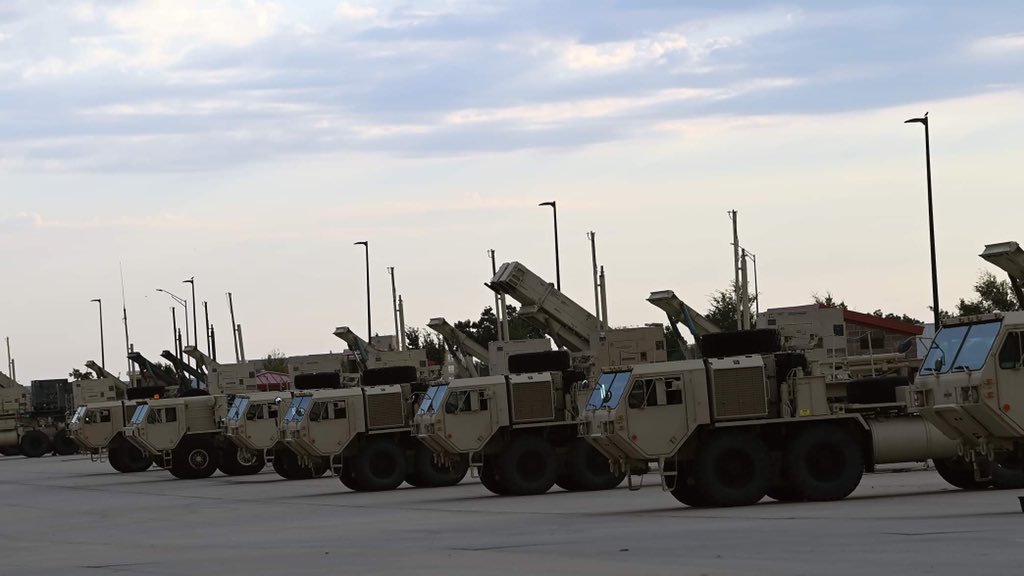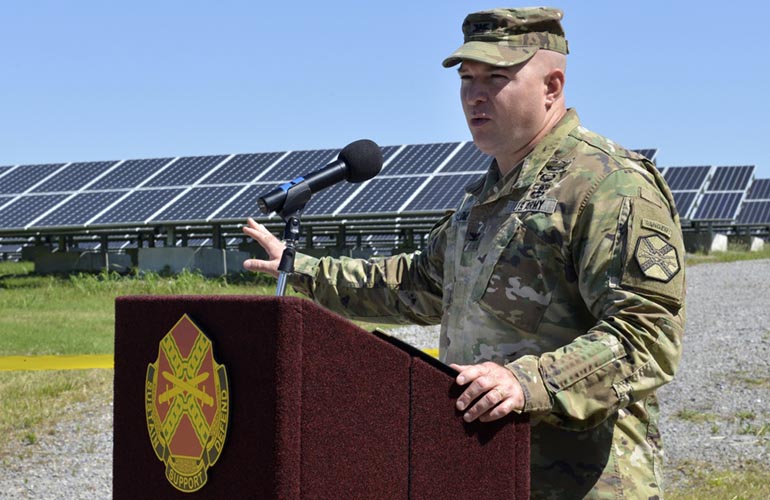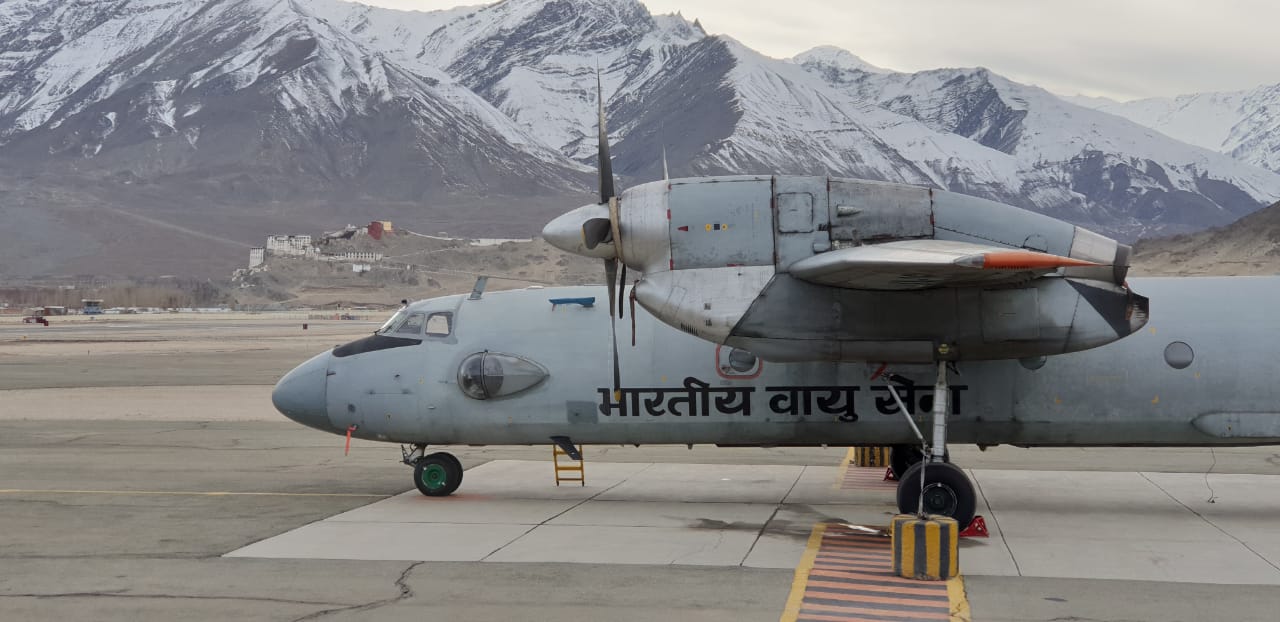In a significant step last week, the US Army has devised a roadmap to reduce carbon emissions by using more and more green energy, protect military bases against damage from global warming and improve readiness by training soldiers to deal with a world with more killer heat waves, droughts, and floods.
Christine E. Wormuth, Assistant Secretary of the Army (Installations, Energy and Environment), released on February 8 a “climate strategy report”. Principal Army Climate Strategy (ACS) and goals, as mentioned in this report are:
One, the Army, whose core purpose will remain “to deploy, fight, and win the nation’s wars by providing ready, prompt, and sustained land dominance as part of the Joint Force remain”, will also be a resilient and sustainable land force able to operate in all domains with effective mitigation and adaptation measures against the key effects of climate change, consistent with Army modernization efforts.

Two, it will achieve a 50% reduction in Army net GHG (greenhouse gas) pollution by 2030, compared to 2005 levels.
Three, it will attain net-zero Army GHG emissions by 2050.
Four, it will proactively consider the security implications of climate change in strategy, planning, acquisition, supply chain, and programming documents and processes.
US Army’s Climate Strategy
The report further elaborates that “the Army can increase capability and installations’ resiliency; prepare for new hazards and new environments; modernize processes, standards, and infrastructure; and decrease operational energy demand—all of which in turn will reduce greenhouse gas emissions.
Guided by the ACS, the Army will build on its current progress in areas such as vehicle fuel efficiency and electrification, operational power generation, battery storage, land management, procurement, supply chain resilience, and workforce development.
“The Army will continue to reduce consumption of energy and other natural resources to improve operational readiness and modernization while adapting to and mitigating current and future climate threats.”

The report outlines three primary areas for how the Army plans to adapt to climate change. These areas cover better buildings, better vehicle purchases and supply chains, and better training. It has drawn three lines of effort (LOE) that need to be implemented towards “a resilient and sustainable land force able to operate in all domains with effective adaptation and mitigation measures against climate change, consistent with Army modernization efforts”.
LOE 1: Installations: Enhance resilience and sustainability by adapting infrastructure and natural environments to climate change risks, securing access to training and testing lands into the future, and mitigating GHG emissions.
LOE 2: Acquisition & Logistics: Increase operational capability while reducing sustainment demand and strengthening climate resilience.
LOE 3: Training: Prepare a force that is ready to operate in a climate-altered world.
“The effects of climate change have taken a toll on supply chains, damaged our infrastructure, and increased risks to Army Soldiers and families due to natural disasters and extreme weather,” wrote Christine E. Wormuth in her forward to the report, adding, “The Army must adapt across our entire enterprise and purposefully pursue greenhouse gas mitigation strategies to reduce climate risks.”
Harnessing Renewable Energy
Accordingly, the report says how for its more than 130 installations across the globe, the US Army will go for on-site carbon-pollution-free power generation through wind and/or solar power or other options. It talks of shifting the Army vehicles from fuel-based to battery-electric. Vehicle electrification is indeed a major strategy in this regard.

Realizing that tanks are an especially hard vehicle to convert to electric power, the report emphasizes the early electrification of the lighter vehicles. It says that by 2035, it will try to electrify all of its non-tactical vehicles — the trucks and cars that transport people and goods within bases.
It may be noted that the US Defense Department is the world’s single largest consumer of oil – and as a result, one of the world’s top greenhouse gas emitters. It accounts for between 77% and 80% of all federal government energy consumption since 2001.
US Military — A Major Polluter
Of course, a 2019 study on military fuel consumption and climate impact by Neta C. Crawford of Brown University says that the US Army consumed the second-least amount of fuel relative to the other forces, trailing only the Marine Corps. Oil consumption depends on a particular service’s function. While tanks like the Abrams may get less than a mile per gallon, the naval platforms and Air Force fighters consume the most.
A B-2 bomber, which holds more than 25,600 gallons of jet fuel, burns 4.28 gallons per mile and emits more than 250 metric tons of greenhouse gas over a 6,000 nautical mile range. The KC-135R aerial refueling tanker consumes about 4.9 gallons per mile.

In fact, taking into account the fuel consumption of the leading military powers of the world, some scientists have estimated that together, militaries and their supporting industries might account for up to 5% of global emissions: more than civilian aviation and shipping combined.
Dr. Stuart Parkinson, Executive Director of Scientists for Global Responsibility, argues, “I estimate that the carbon emissions of the world’s armed forces and the industries that provide their equipment are in the region of 5% of the global total.
But this does not include the carbon emissions of the impacts of war – covering sources such as fires, deforestation, health care for survivors, and post-conflict reconstruction. In a high emissions year – such as 1991 when fires raged in the Kuwaiti oil fields – this could be as high as 1%. So, the total military carbon boot-print could be 6%.
As such, this would make it a more polluting sector than, for example, civil aviation. And, of course, we should not forget all the other profoundly negative impacts of war. ”

However, it has to be pointed out that realizing the ominous climate impacts, the US has been reducing its fossil fuel consumption by its military. Studies suggest that the DOD’s total annual emissions declined from a peak of 85 million metric tons of carbon dioxide equivalent in 2004 to 59 million metric tons in 2017.
This has been done by improving the energy efficiency of military vehicles, increasing the military use of electricity from renewable sources, and reducing carbon pollution.
In fact, this concern over climate change is said to be one of the important reasons why forces are shifting towards greater use of smaller and more fuel-efficient robotic aircraft – drones – as replacements for crewed military aircraft.
How Is India Faring?
Interestingly, in India too, work is on to produce bio-jet fuel. In November last year, a Dehradun-based research lab got provisional governmental approval to produce bio-jet fuel for use on military aircraft of the Indian Air Force (IAF).
The technology, developed by the Indian Institute of Petroleum (CSIR-IIP), a constituent laboratory of the Council of Scientific and Industrial Research, has undergone evaluation tests and trials over the last three years.
Earlier on January 26, 2019, an AN-32 aircraft, filled with blended bio-jet fuel, had flown over Raj Path at New Delhi during the Republic Day celebrations. Thereafter, the performance and reliability of the Indian technology were tested when the Russian military aircraft safely landed and took off from Leh airport on January 30, 2020, at high altitudes under severe winter conditions.
The bio-fuel was also used on a civil, commercial demonstration flight operated by SpiceJet on August 27, 2018, from Dehradun to Delhi. These test flights with green fuel underscored the capabilities and commitment of Indian scientists and airmanship of IAF to serve a national cause, it is said.

Indian bio-jet fuel can be produced from used cooking oil, tree-borne oils, short gestation oilseed crops grown off-season by farmers, and waste extracts from edible oil processing units. It is supposed to reduce air pollution by virtue of its ultra-low sulfur content compared with conventional jet fuel.
It may be noted that way back in 2013, the Government of India had asked the three services to cut fuel consumption by 40 percent. But that was not due to concerns over climate change but because of financial constraints at a time when the global oil prices were sky-rocketing.
Defense forces had spent over Rs 7,000 crore on petroleum products in 2012-13. This included Rs 4,090 crore spent by the air force and Rs 1,661 crore by the navy, according to analyst Laxman Behera, then a research fellow at the Manohar Parrikar Institute for Defence Studies and Analysis.
Now that the US has taken the lead in drawing its road map to reduce the use of fossil fuel by its military, it is expected that others, including India, will follow.
- Author and veteran journalist Prakash Nanda is Chairman of Editorial Board – EurAsian Times and has been commenting on politics, foreign policy on strategic affairs for nearly three decades. A former National Fellow of the Indian Council for Historical Research and recipient of the Seoul Peace Prize Scholarship, he is also a Distinguished Fellow at the Institute of Peace and Conflict Studies. CONTACT: prakash.nanda@hotmail.com
- Follow EurAsian Times on Google News




